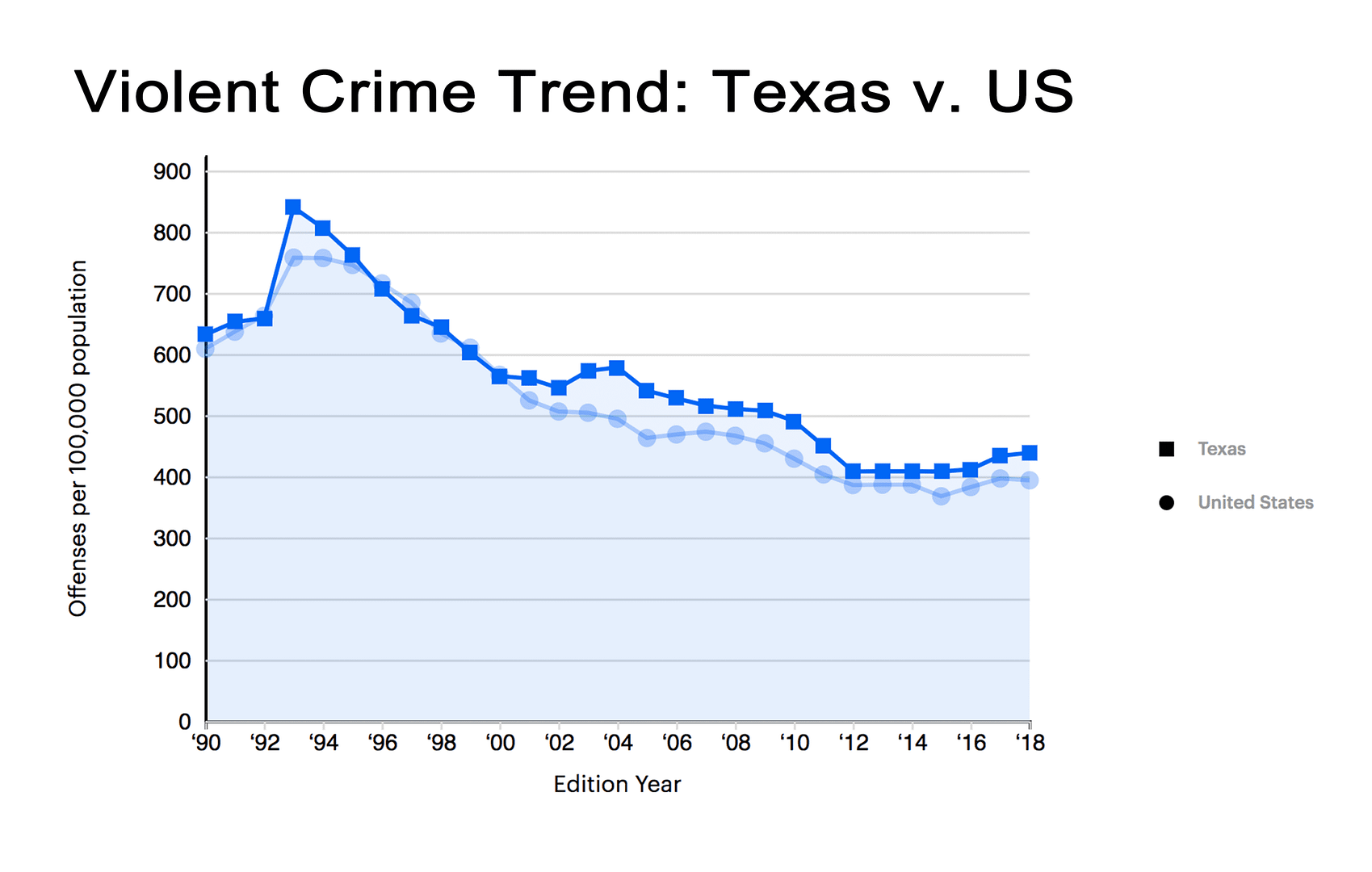It’s one of the most important, if not one of the most discussed, positive trends of the last couple of decades: Violent crime in Texas has decreased considerably.
Violent Crime Remains at Historic Lows, but Systematic Challenges Persist
The violent crime rate in Texas (defined as murder, rape, robbery and aggravated assault) peaked in the early 1990s and declined by almost half by 2017. A variety of possible explanations for the sharp decline exist, but the state’s overall economic prosperity certainly plays a role. While the significant drop in violent crime over the years in Texas is a celebration, our violent crime rate is still higher than the national average. Further, violent crime in Texas is inching back up again, having increased 7.7 percent between 2014 and 2017, making it a trend to watch.
The state spends more than $6.5 billion per year on public safety and the judiciary, half of which goes to running the state prison system, the largest in the nation. And this figure doesn’t capture significant additional local expenditures on police, county jails and courts, which can quickly crowd out other governmental priorities.
While Texas has been a model of bipartisan interest in criminal justice reform and reduced its overall incarceration rate, we still have one of the highest incarceration rates in the country and a system that remains plagued with poor outcomes and alarming disparities, presenting a poor return on investment for taxpayers overall.
Improving the outcomes in our criminal justice system is one of the most important challenges our growing state faces. But we can’t justify pumping more and more funding into today’s system without collecting better, more comprehensive data and rethinking the incentives that are tied to funding. Key data are often kept at the local level and are therefore incomplete or inconsistent, but we are working to compile the information and analysis that will point us toward better results. Over the next months we will be building out our justice and safety data sets available on our data platform.
We also need a strategic approach to fixing the disparities that plague the system:
- In Texas and nationally, the victims of violent crimes are predominantly non-white and from low-income households.
- African Americans make up 12 percent of the overall Texas population but 32 percent of the prison and jail population. Similar disparities exist for youth in the juvenile justice system.
- About 70 percent of offenders have substance abuse disorders, and approximately 17-34 percent have serious mental illnesses – rates greatly exceeding those found in the general population, which hover in the 4-7 percent range.
Texas 2036 wants to build consensus around solutions and reforms that will ensure fairness in the system, allow more Texans to live productive lives, make communities safer, and make the most efficient and effective investments of taxpayer dollars. We invite all Texans to be part of this conversation by sharing your ideas and experiences and helping us promote new ways of confronting this far-reaching issue.
Just as Texas has made real and substantive strides toward reducing violent crime and incarceration rates, we know this state can do more to find smarter and more just approaches toward rehabilitating offenders and protecting our communities.

